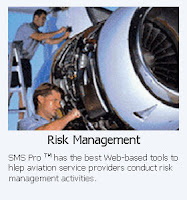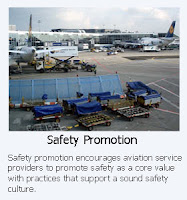How to Encourage Employees to Use SMS Hazard Reporting Tools
Employees remain the best source for detecting unsafe and potentially hazardous conditions in the workplace. Safety managers are often challenged regarding how to encourage employees to use aviation hazard reporting tools, such as Web-based hazard reporting forms, paper reporting forms, or offline hazard reporting software tools.Explicit Top Management Commitment to Aviation SMS Program
The tone at the top of the organization drives safety culture. Top management needs to communicate their commitment to creating a productive and safe workplace for everyone. Safety managers must encourage department heads to talk to their employees about how hazard reporting tools help the company achieve this goal and makes the company more competitive, thereby ensuring job security. Department managers should repeatedly tell their employees that when they report hazardous conditions or events, the information help eliminate and correct workplace risks while improving operations.Other steps commonly improve corporate reporting culture and encourage the use of hazard reporting systems include:
- Train employees to use hazard reporting systems. This training initial and recurrent training and should be documented in preparation of future audits.
- Provide employees with access to their reported issues and let them know what to expect once reports are submitted. Routinely distribute aggregated report information to employees and also continue explaining the reporting and investigation processes in your SMS.
- Establish, communicate and provide training (initial and recurring) on company non-punitive and anti-retaliation policies. If employees are expected to use hazard reporting systems, they will need to feel safe and protected.
- Provide employees with structured access to management. Communicate the chain of command within the company and designate times when management is available to speak with them and answer questions. Offer training sessions regarding how to communicate openly within your organization.
Unless Employees are Aware, You Will Have No Reporting Culture
Employees must be aware your hazard reporting system exists, AND they must also know how to use it. One way to promote and encourage hazard reporting is by giving employees access to a knowledge base of past issues and resolutions, such as SMS Pro's "General Issue Viewer" of desensitized issues and the "Lesson Learned Library." Post signs and posters around your workplace reminding employees of their options when it comes to reporting hazards and events. SMS training and constant communication brings awareness to potentially hazardous conditions and necessary steps taken to reduce incidents and accidents.
Anonymity and Confidentiality in SMS Hazard Reporting
Provide employees with various options for reporting hazards or events, such as email, paper based reports, Web hazard reporting forms and offline hazard reporting tools. Make hazard reporting as easy as possible and accommodate various employee groups as their circumstances dictate.
Ensure your employees understand the differences between confidentiality and anonymity to avoid confusion between the two when they are reporting hazards. Whenever anonymous reporting is possible, employees should be given a way to track the investigation and follow up on the progress of their reported issue. In other cases, employees may opt for confidentiality and not anonymity. This means that individuals willingly expose their identity, but only to the safety managers and management team.
Offer Recognition or Rewards for Hazard Reporting
One way to reinforce hazard reporting is to give awards for hazard problem reporting, (e.g., by incorporating them into an existing award program for suggestions that save or make money for the organization). The amount of the award could be based on saving money (e.g., reducing lost time accidents), but there are many other ways to positively reinforce the message that hazard reporting is valued. The program should be well publicized, such as in company newsletters, as should the presentation of the awards.
Related Posts
- How to Report Aviation Incidents & Accidents by Email
- Public Issue Reporting Aviation Safety Hazards
- 11 Ways to Submit Issues Using SMS Pro™ Hazard Reporting Software
- Safety Non-Punitive Reporting Policy Statement Sample
- How to Increase Airline/Airport Hazard Reporting
- Reporting Airline Airport Hazards Using IPad & IPhone
- How to Encourage Employees to Use SMS Hazard Reporting Tools
- Hazard Reporting for Airlines/Airports SMS for All Stakeholders
- Hazard Reporting for Effective Aviation SMS Management Systems
How to best help your
Aviation Safety Management System
Become an SMS PRO

About NWDS - founded in 2003 by six software engineers, NorthWest Data Solutions (NWDS) provides custom computer programming and systems design services. NWDS creates many types of software, including e-commerce, financial, defense, engineering, logistics, aviation and more. In 2007, NWDS developed SMS Pro™ a web based SMS application that supports an organization's overall SMS through safety reporting, safety documentation, safety risk management and safety assurance. SMS Pro™ is currently used by aviation organizations in the U.S., Canada, Asia, Latin America, Africa and the Middle East to help manage their SMS programs. NWDS continues to support SMS Pro™ and add new functionality. NWDS offers custom contract programming services in the U.S. and Canada and is managed by Chris Howell, one of the founders. Their headquarters is in Anchorage, Alaska. For information on NWDS visit their website at www.nwds-ak.com and www.asms-pro.com to learn more about SMS Pro™.

